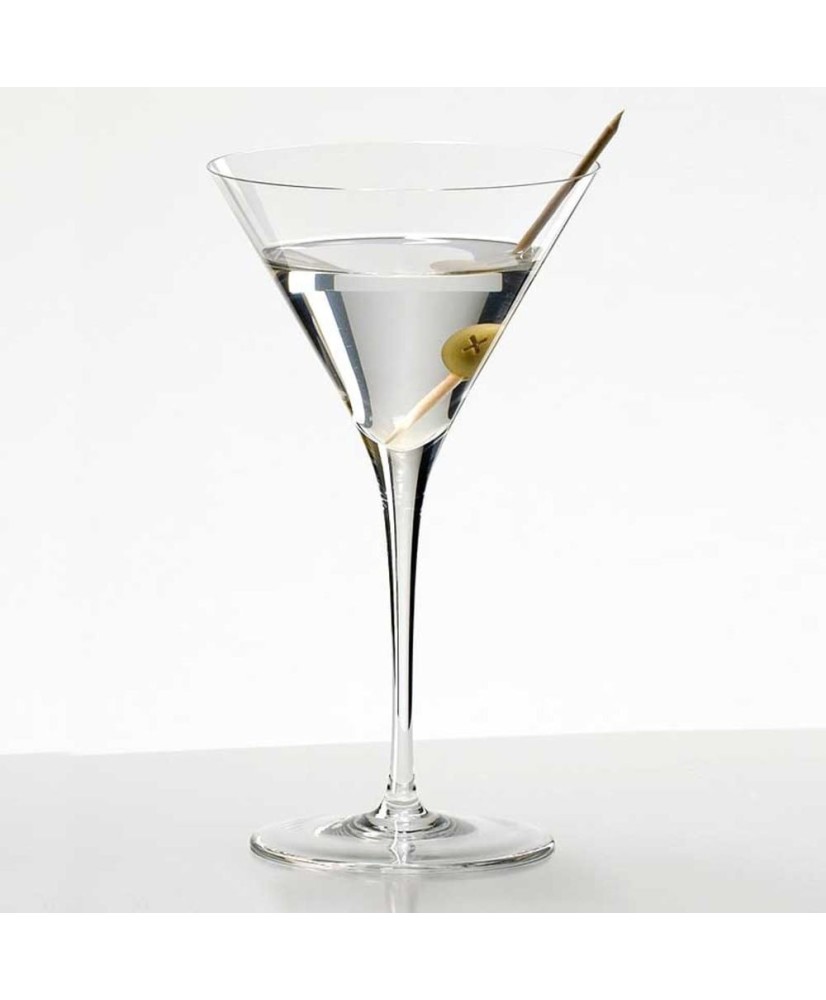- On sale!
- -$40.00

- On sale!
- -$40.00

In 1973, in Orvieto, Claus Riedel presented the world's first gourmet glass series developed with the help of the Associazione Italiana Sommeliers (A.I.S.). The series consisted of 10 sizes. Since then the world of wine has changed radically.
 Do you have any questions?
Do you have any questions?
Contact us at 1-866-567-8467
 Free delivery
Free delivery
For orders of $99 or more on selected products*
 We want your feedback!
We want your feedback!
Leave us your comments at the bottom of the page.
Recommended for: Martini
In 1973, in Orvieto, Claus Riedel presented the world's first gourmet glass series developed with the help of the Associazione Italiana Sommeliers (A.I.S.). The series consisted of 10 sizes. Since then the world of wine has changed radically.
Today, regions and continents are producing wines that didn't exist or were unknown 25 years ago. The Sommeliers series was developed further by his son Georg, into an all-embracing state-of-the-art wine glass collection. Praised in 1991 by Robert Parker, Jr., publisher of The Wine Advocate, as "The finest glasses for both technical and hedonistic purposes are those made by Riedel.
The effect of these glasses on fine wine is profound. I cannot emphasize enough what a difference they make." Thanks to worldwide demand, Sommeliers is now the wineglass benchmark and the most successful series of hand-made glasses in the world. Each glass is individually made: the upper parts blown into a mould, the stem and base hand-crafted using methods developed at the time of Christ's birth.
Our glass-makers invest their talent, know-how and meticulous craftsmanship in making glasses of the impeccable quality our consumers expect. Sommeliers are executed in over 24% lead crystal.
For more information, please visit this products webpage.
"Only" 2000 years have passed since the glass blowpipe was used in ancient Rome for the first time. This made it possible to blow glass into different shapes. At our factory in Kufstein our glassblowers still use this ancient mouth-blowing method with great care and precision to create the world-famous handcrafted Riedel glasses.

Raw material: quartz sand, lead oxide, sodium and potassium

Furnace containing liquid lead crystal, at a working temperature of 1100°C/2012F

First step to produce the bowl; glass bulb (gather) on hollow metal rod (blow-pipe)

Liquid glass pre-moulded in a shaping block

Prior to blowing into the mould

Mouth-blowing by using the blow-pipe

Blowing the bowl into shape by using a mold

Gatherer delivers liquid glass to chairman, liquid glass is cut and pulled by shears to form the stem

Bed-plate moulded by foot-board

Wooden tool used to fix footplate securely, preventing wobbling